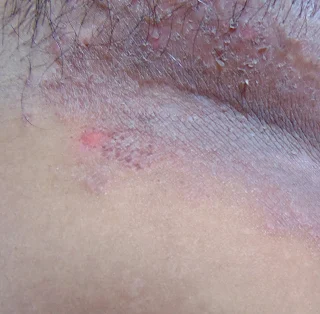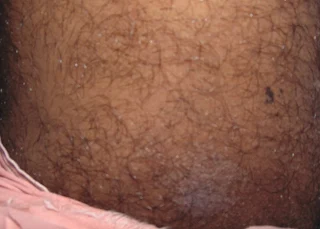Skin Infection and the Best Path of Treatment: Allopathy, Homeopathy, and Ayurveda
Skin infections are a common health issue affecting people of all
ages, often caused by bacteria, fungi, or viruses. While Allopathic and Homeopathic treatments offer quick
and personalized relief, many are turning to Ayurveda
for its natural, holistic approach. Among Ayurvedic remedies, neem bark extract stands out as a powerful,
time-tested solution for various skin infections due to its antibacterial, antifungal, and anti-inflammatory
properties. In this blog post, we’ll explore the strengths and limitations of
each treatment path, with a special focus on how Ayurveda
and neem can help you heal your skin the natural way.
Types of Skin
Infections and Their Causes
|
Type |
Causative
Agents |
Examples |
|
Bacterial |
Staphylococcus
aureus, Streptococcus pyogenes |
Impetigo, Cellulitis,
Boils |
|
Viral |
Herpes simplex
virus, Varicella zoster virus |
Herpes, Chickenpox,
Warts |
|
Fungal |
Dermatophytes, Candida albicans |
Ringworm, Athlete’s
foot, Yeast infections |
|
Parasitic |
Sarcoptes
scabiei (scabies mite), lice |
Scabies, Lice
infestations |
Common Causes and
Risk Factors
1. Breaks in the skin: Cuts, wounds, insect
bites allow entry of pathogens.
2. Poor hygiene (lacking cleanliness): Encourages
growth of microorganisms on skin.
3. Weakened immune system: Diseases like diabetes,
HIV, or cancer can reduce resistance.
4. Warm and humid climates: Promote fungal
infections (like ringworm).
5. Close physical contact: Sharing towels,
clothes, or skin contact spreads infections.
6. Chronic skin conditions: Eczema or psoriasis can
make skin more vulnerable.
7. Contaminated water or surfaces: Especially in
communal areas like gyms or pools.
Symptoms of Skin
Infections
- Redness and swelling
- Warmth or pain in the affected area
- Pus or drainage
- Itching or burning sensation
- Blisters or sores
Prevention Tips
- Maintain proper personal hygiene
- Avoid sharing personal items
- Keep skin moisturized and intact
- Clean wounds immediately
- Wear breathable cotton clothing
- Use antifungal or antibacterial powders in hot weather if
needed
Consult a doctor in case of severe issues
Now the question arises, which among Allopathic, Homoeopathic and Ayurveda treatment is best for skin infection? Has an Allopathic treatment severe side effects? See and read the following figures and then continue to the details till the end to get overall idea.
The Common Side effects in using creams like these
include:
1. Allergic Skin Reaction
2. Vertigo (head spinning)
3. Change in Blood Pressure
4. irritation
5. Rash
6. Eczema and many more ......
The best treatment
for a skin infection depends on the type and severity of the infection, the individual’s
condition, and the speed and
effectiveness required. Here's a comparison of Allopathic,
Homeopathic, and Ayurvedic treatments for skin infections:
1. Allopathic
Treatment (Modern Medicine)
Pros:
·
Fast-acting: Quick relief, especially for acute infections.
·
Scientifically tested antibiotics, antifungals, antivirals.
·
Emergency-friendly and widely
available.
Cons:
·
Possible side effects (e.g. antibiotic resistance, allergies).
·
May not address underlying chronic causes or immunity.
Best for:
·
Bacterial infections (e.g. cellulitis, impetigo) – Antibiotics
·
Fungal infections (e.g. ringworm, athlete’s foot) – Antifungals
·
Viral infections (e.g. herpes) – Antivirals
2. Ayurvedic
Treatment (Traditional Indian Medicine)
Pros:
·
Holistic approach: Treats root cause and improves immunity.
·
Uses natural herbs like Neem, Turmeric, Aloe vera.
·
Suitable for long-term prevention and chronic issues.
Cons:
·
Slower action, not ideal for severe or acute infections.
·
Quality of herbs and
standardization can vary.
·
Needs expert guidance to avoid improper combinations.
Best for:
·
Chronic eczema, psoriasis, itching,
mild fungal
infections.
·
Detoxification and immune boosting post-infection.
3.
Homeopathic Treatment
Pros:
·
Based on individual symptoms and body constitution.
·
Minimal side effects, even in sensitive individuals.
·
Promotes natural healing and long-term relief.
Cons:
·
No immediate relief for severe infections.
·
Treatment effectiveness is highly individual-specific.
·
Scientific evidence is limited and controversial.
Best for:
·
Chronic skin conditions, recurrent infections, and when allergic to conventional drugs.
Which Is
Best? – A Practical Summary
|
Condition |
Best
Approach |
|
Acute,
severe infections |
Allopathic
(fast, effective, lifesaving) |
|
Chronic,
recurring issues |
Ayurvedic
or Homeopathic (immune support, long-term relief) |
|
Mild
infection in healthy person |
Can consider Ayurveda
or Homeopathy under guidance |
|
Mixed
approach |
Integrative treatment (e.g. antibiotics +
neem/turmeric support) |
Neem Bark Extract and Skin Infections
What is Neem Bark Extract?
Neem (Azadirachta
indica) is a medicinal tree used in Ayurveda for thousands of years. While
neem leaves and oil are most commonly used, the bark extract is also
highly potent due to its antimicrobial, anti-inflammatory, antifungal, and
wound-healing properties.
How Neem Bark Extract Helps in Skin Infections
|
Benefit |
Mechanism / Action |
|
Antibacterial |
Inhibits growth of Staphylococcus aureus, E.
coli, etc. |
|
Antifungal |
Effective against Candida albicans, Trichophyton
species (ringworm fungi) |
|
Anti-inflammatory |
Reduces redness, swelling, itching |
|
Astringent & Antiseptic |
Helps clean and dry wounds; prevents secondary
infection |
|
Wound healing |
Promotes tissue regeneration and scar prevention |
Key Bioactive
Compounds in Neem Bark
- Nimbidin – antibacterial,
anti-inflammatory
- Tannins – astringent
properties
- Azadirachtin – insecticidal,
antimicrobial
- Flavonoids – antioxidant and
anti-inflammatory
How to Use Neem
Bark Extract for Skin Infections
Always do a patch test first to check for allergic reactions.
|
Form |
How to Use |
|
Neem Bark
Decoction |
Boil crushed
neem bark in water, cool, and wash infected area |
|
Neem Bark
Paste |
Make paste of
powdered bark with water; apply to affected area |
|
Neem Bark
Extract Cream |
Herbal creams
or ointments (available in Ayurveda stores) |
|
Neem Bark Oil |
Sometimes
combined with other oils (e.g., coconut or sesame) |
Precautions
- Avoid internal consumption unless prescribed by a qualified
Ayurvedic doctor.
- Do not apply to open, deep wounds or if severe infection is
present.
- Not recommended for pregnant women without medical supervision.
- Overuse can cause dryness or skin irritation in sensitive
individuals.
Scientific
Support
Several studies have shown that neem bark extract
possesses:
- Broad-spectrum antimicrobial activity
- Immunomodulatory effects (boosts
local skin defense)
- Potential to enhance collagen formation in wound healing
Summary Chart: Neem Bark
Extract for Skin Infections
|
Property |
Effect on Skin
Infection |
|
Antibacterial |
Kills harmful skin
bacteria |
|
Antifungal |
Fights ringworm,
athlete’s foot, candidiasis |
|
Anti-inflammatory |
Reduces redness,
swelling, pain |
|
Wound healing |
Promotes faster tissue
regeneration |
|
Astringent |
Dries out and cleans
infected area |
Important
Advice
·
Do not self-medicate, especially for pus-filled or spreading infections.
·
Always consult a qualified medical practitioner (MBBS, BAMS, BHMS) depending on your choice of system.
·
Skin infections can worsen quickly
— timely
treatment is critical.








As someone who has tried countless products and treatments to fade acne scars, I'm intrigued by what the Acne Scar Center has to offer. The testimonials and before-and-after photos on their website are impressive. Definitely considering giving them a try! Best acne scars treatment
ReplyDelete